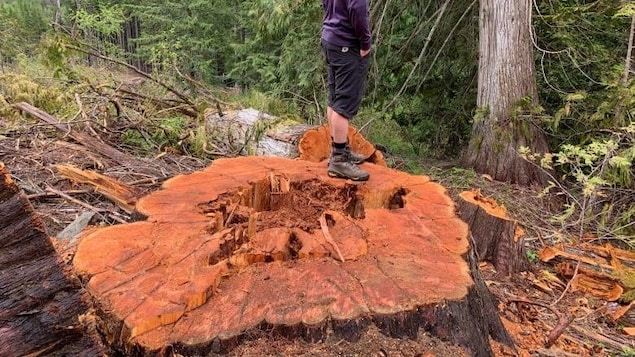His book coming out these days Tree Thieves: Crime and Survival in North America’s Woods discusses the motivations and identity of the poachers who prey on these trees.
In her research, the author discovered that there is a link to be established between the decline of small municipalities and the illegal felling of trees.
Poaching usually happens in small communities, near protected areas. And these places have really suffered with deindustrialization and the downturn in the lumber industry
she explains.
” Poverty is on the rise in these rural areas, so is the use of hard drugs, particularly methamphetamine. »
Lyndsie Bourgon says that although police and federal authorities identify poverty and drug use as factors in the phenomenon, several poachers she met do not say they are affected by these issues.
It shows how a shift in culture, in environmental protection and in our priorities can affect a region.
says the author
In his view, poaching is a symptom of what these communities have been through.
She says some of the poachers feel sidelined as the timber industry goes through big changes. They believe that their particular appreciation of the forest is no longer respected
.
The author adds that although the majority of poaching in Canada occurs in provincial parks and on Crown land, many people believe that it is powerful decision makers who make the choice to take possession of the land and prevent common use for all
.
A growing problem
Last year, the number of trees felled without authorization in the province increased. The Ministry of Forests is investigating 180 cases of illegally cut trees in 2021.
An increase noticed by the ministry which believes that there would be a link with the soaring prices of lumber due to the pandemic. We do not yet have a count for 2022, but the authorities expect a drop due to the decrease in the price of lumber this year.
The issue is known in British Columbia, but Lyndsie Bourgon says the phenomenon occurs everywhere in North America. It is gaining momentum on the Canadian east coast, where black walnut trees and ancient maple trees are being cut down and sold by poachers.
In North America, in total, it is estimated that forest poaching is worth almost a billion dollars annually and in British Columbia, it is 20 million dollars a year.
she says, adding that it is difficult to establish precise figures, because the wood from illegally cut trees is difficult to identify once it is introduced on the market.
Deter poachers
The Ministry of Forests says that 966 penalties have been distributed over the past 12 years in connection with forest poaching. They estimate the total fines imposed at approximately $123,700 in contraventions and more than $1 million in administrative court.
British Columbia’s Forest Practices Act prohibits the damage, destruction or removal of timber from Crown land, with penalties of up to $1 million or three years in prison or both.
With information from Padraig Moran and The Current
Reference-ici.radio-canada.ca
